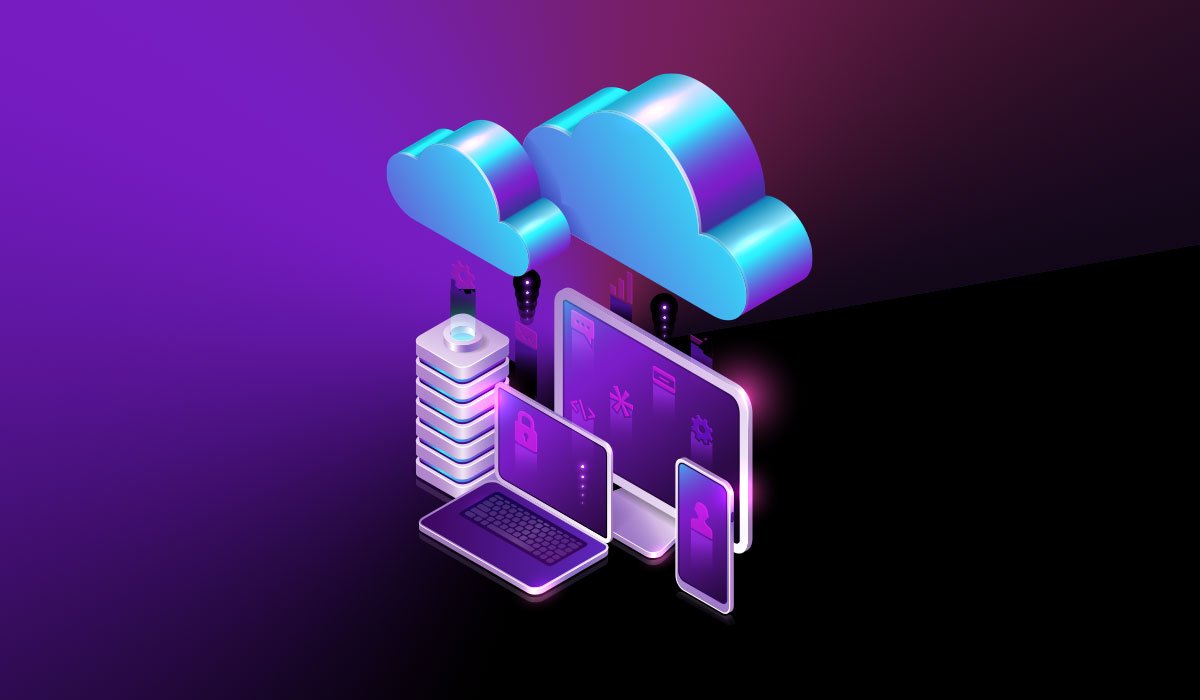Cloud computing is the on-demand inclusion of computer system resources, in particular data storage (cloud storage) and processing capabilities, without direct registered user management. The epithet is evidently used to illustrate data centers that are readily accessible to many clients on the Internet.Large clouds, prevalent today, regularly have capacities disseminated over various areas from focal workers.
On the off chance that the association with the client is generally close, it very well might be assigned an edge worker. Clouds might be restricted to a solitary association, or be accessible to different associations (public cloud). Cloud computing is basically build on sharing of assets to accomplish soundness and economies of scale.
1. Working Criteria of cloud computing
Instead of having their own computing infrastructure, corporations will rent access to something from applications to storage from a cloud service supplier. Cloud computing services companies will avoid the direct price and complexness of owning and maintaining their own IT infrastructure and instead merely purchase what they use, after they use it.
In turn, suppliers of cloud computing services will enjoy important economies of scale by delivering constant services to a good vary of consumers.
2. Cloud Computing Services
Cloud service providers now cover a wide range of options, from fundamental processing, networking and computing power to natural language processing and artificial intelligence along with standard business applications. Almost any platform that doesn’t necessitate you to be physically connected to the computer hardware you’re using can now be processed via the cloud.
3. Why is it called cloud computing?
A basic thought behind cloud computing is that the placement of the service, and lots of the small print like the hardware or software system on that it’s running, are for the most part moot to the user.
It’s with this in mind that the image of the cloud was borrowed from recent telecoms network schematics, within which the general public phone network (and later the internet) was usually pictured as a cloud to denote that the simply did not matter — it had been simply a cloud of stuff. This can be an over-simplification of course; for several customer’s location of their services and information remains a key issue.
4. Significance of cloud computing
Building the infrastructure to support cloud computing currently accounts for over a 3rd of all IT disbursal worldwide, in step with analysis from IDC. meantime disbursal on ancient, in-house IT continues to slip as computing workloads still move to the cloud, whether or not that’s public cloud services offered by vendors or personal clouds engineered by enterprises themselves.
451 analysis predicts that around third of enterprise IT disbursal are going to be on hosting and cloud services this year “indicating a growing reliance on external sources of infrastructure, application, management and security services”. Analyst Gartner predicts that half world enterprises exploitation the cloud currently can have gone all-in on that by 2021.
5. Cloud computing characteristics
We have five major characteristics of cloud computing. They are mentioned below:
- On-demand self-service
- Broad network access
- Resource pooling
- Rapid elasticity
- Measured service
6. What are the benefits of cloud computing?
No longer purchasing servers, revamping applications or operating systems or shutting down and dismantling of hardware or software once it’s out of date, as is all managed of by the subcontractor. It may make sense for commodity applications, such as email, to switch to a cloud provider rather than fixate on in-house capabilities.A company that focuses on running and securing these services is probably going to own higher skills and versed employees than a little low business might afford to rent, therefore cloud services could also be ready to deliver a safer and economical service to finish users.
- Utilizing cloud administrations implies organizations can move quicker on ventures. Test out ideas without extensive obtainment and enormous forthright expenses, since firms just compensation for the assets they devour.
- This idea of business readiness is frequently referenced by cloud advocates as a key advantage. The capacity to turn up new administrations without the time andexertion related with customary IT acquisition should imply that is simpler to start new applications quicker.
- Furthermore, if another application ends up being an uncontrollably well known the versatile idea of the cloud implies it is simpler to scale it up quick.
7. Cloud computing security
Objections to the general public cloud typically begin with cloud security, though the key public clouds have tested themselves a lot of less at risk of attack than the typical enterprise information center.
Of bigger concern is that the integration of security policy and identity management between customers and public cloud suppliers. additionally, government regulation could forbid customers from permitting sensitive information off premises. different considerations embody the danger of outages and also the long-run operational prices of public cloud services.
8. Cloud computing types
- Public cloud
- Private cloud
- Hybrid cloud
8.1 Public cloud
Utilizing cloud administrations implies organizations can move quicker on activities and test out ideas without long obtainment and enormous forthright expenses, since firms just compensation for the assets they burn-through. This idea of business nimbleness is frequently referenced by cloud advocates as a key advantage. The capacity to turn up new administrations without the time and exertion related with customary IT acquisition should imply that is simpler to start new applications quicker. What’s more, if another application ends up being an uncontrollably famous the versatile idea of the cloud implies it is simpler to scale it up quick.
8.2 Private cloud
Private clouds provide what their name suggests: privacy. you are doing not have to be compelled to share your digital area with anyone else. non-public cloud platforms area unit usually designed in-house, and that they belong to you and your business. they will even be organized in a very third-party information center and still offer a complicated level of privacy.
If you’re employing a non-public cloud, you recognize World Health Organization has access to the info, recognize if anyone created changes, and recognize what to try just in case of an emergency.
8.3 Hybrid clouds
Hybrid clouds are the best of both worlds. If you are using a hybrid cloud, you can control an internal database and use the public cloud when needed. There might be times when you will need to move data and applications from the private cloud to the public cloud, such as scheduled maintenance, blackouts, and natural disasters. The ability to seamlessly migrate information is perfect for cloud-based disaster recovery and preventing data loss.
Conclusion:
Distributed computing includes conveying various sorts of administrations over the Internet. From programming and investigation to make sure about and safe information stockpiling and systems administration assets, everything can be conveyed through the cloud.
You presumably utilize diverse cloud-based applications consistently. You are profiting by cloud arrangements each time you send a document to your partner by means of the web, utilize a versatile application, download a picture, gorge a Netflix show, or play an online computer game. Every one of these administrations are put away in the cloud and exist in some computerized space.






Leave a Comment